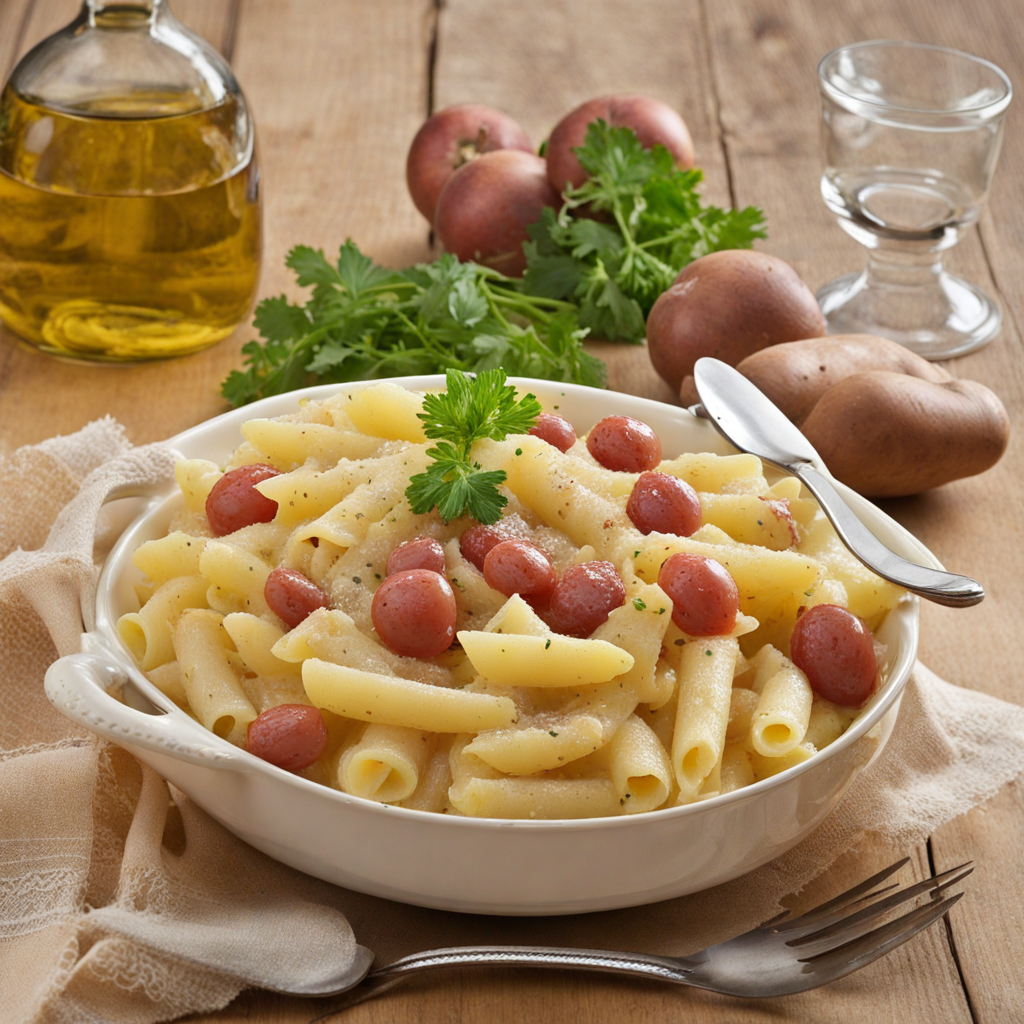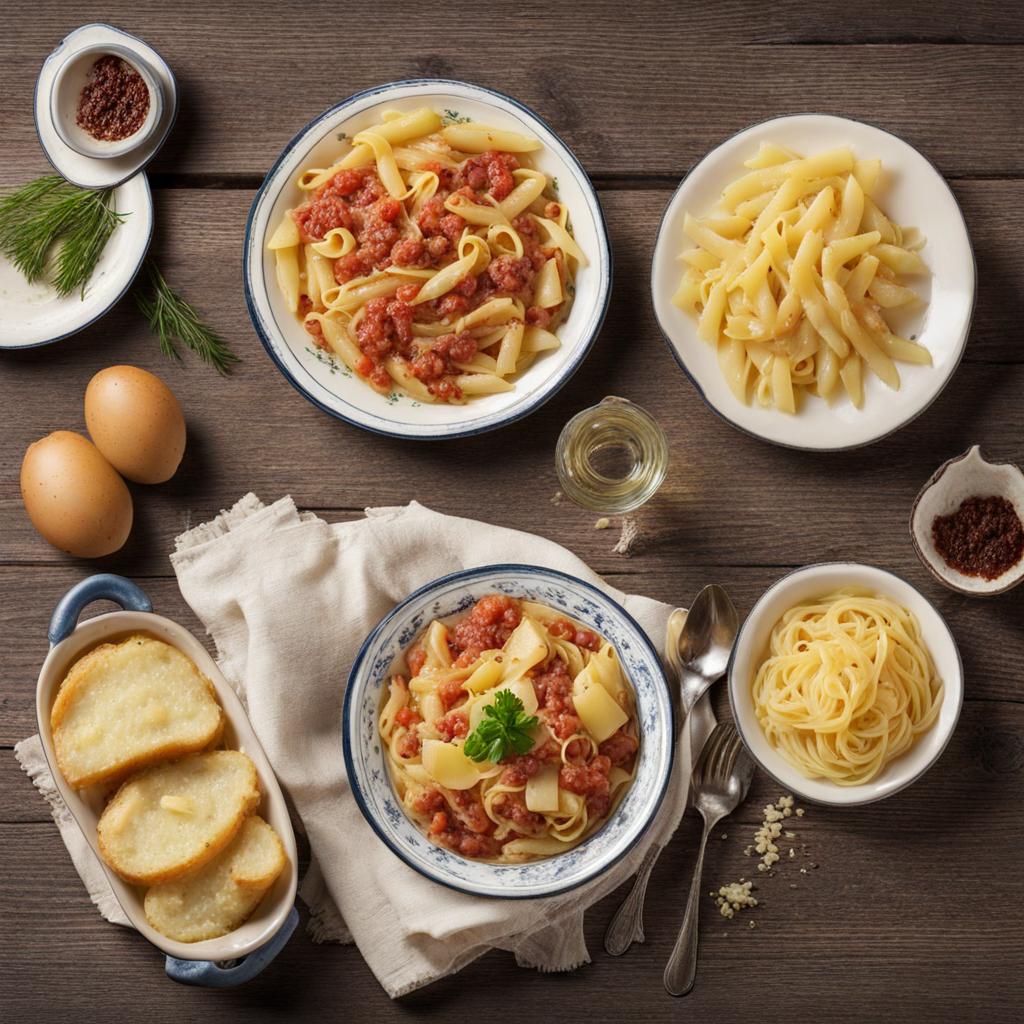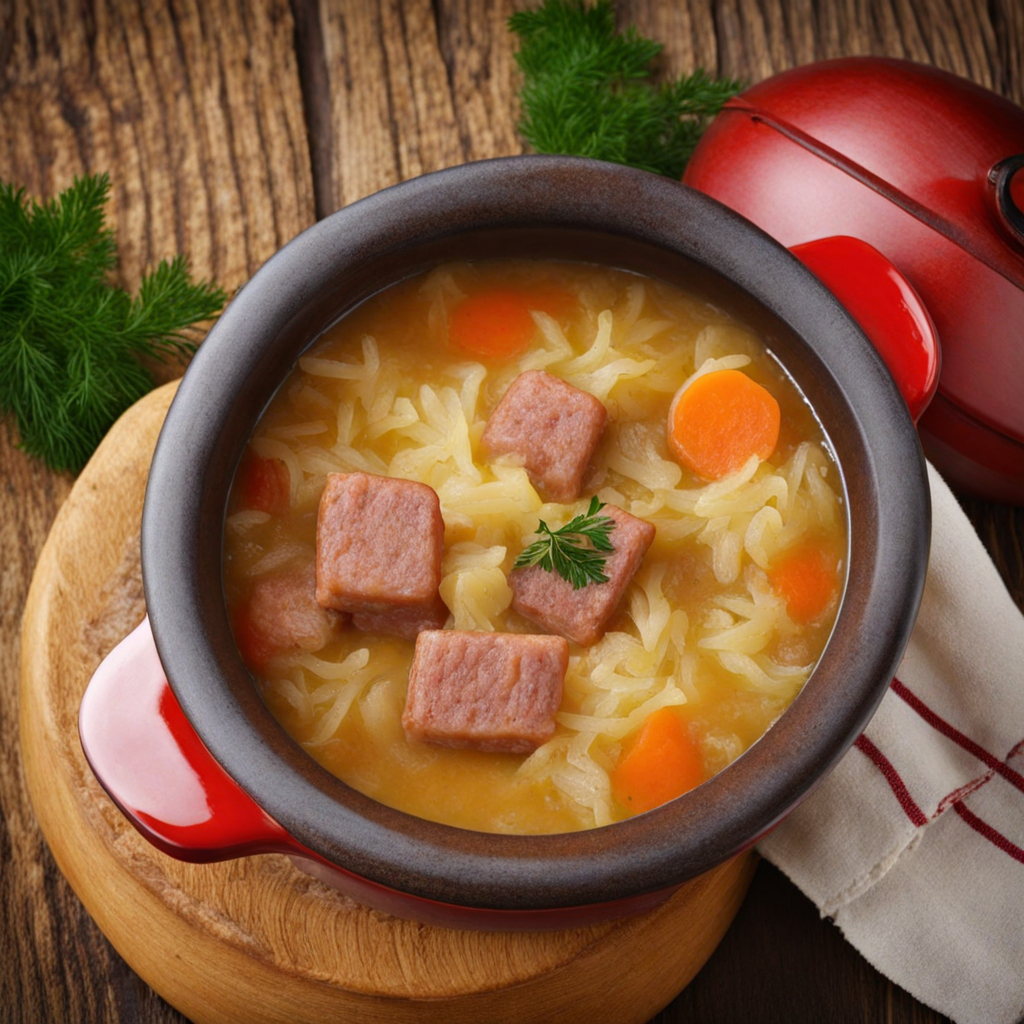Granadír
Granadír is a hearty Slovak dish that showcases the simplicity and comfort of traditional Eastern European cuisine. At its core, Granadír consists of pasta, often macaroni, which is boiled until tender and then combined with a savory mixture of sautéed onions and potatoes. This dish is typically seasoned with salt and pepper, allowing the natural flavors of the ingredients to shine through. The versatility of Granadír means it can be easily customized with additional ingredients such as bacon, sausages, or even vegetables, making it a delightful option for both meat lovers and vegetarians alike.
The texture of Granadír is a key aspect of its appeal. The pasta provides a chewy bite that contrasts beautifully with the soft, creamy potatoes. When mixed together, the dish creates a satisfying combination that is both filling and comforting. Often, Granadír is served with a sprinkle of fresh herbs or a dollop of sour cream, which adds a tangy richness that elevates the overall flavor profile and makes each bite more enjoyable.
How It Became This Dish
Granadír: A Culinary Journey Through Slovak History Granadír, a traditional Slovak dish, showcases the intersection of history, culture, and culinary evolution in Slovakia. This hearty meal, primarily composed of pasta, potatoes, and often accompanied by sautéed onions and a variety of meats, has its roots in the agricultural practices and culinary traditions of Central and Eastern Europe. #### Origins The name "granadír" is believed to be derived from the German term "Granat," referring to pomegranate, although the connection may be more metaphorical than literal. The dish's origin can be traced back to the Austro-Hungarian Empire, where various regional cuisines influenced each other, giving rise to a diverse array of dishes. Granadír is thought to have emerged in the 19th century when economic conditions necessitated the creation of meals that were both filling and economical. In rural Slovakia, ingredients were often limited to what was available locally. The dish typically includes egg noodles or pasta, which were staples in many Central European diets, as well as potatoes, which were introduced to the region in the late 18th century. This combination created a hearty and sustaining meal that could feed families with minimal resources. #### Cultural Significance Granadír holds significant cultural importance in Slovakia, representing the country's culinary heritage. It is often associated with home-cooked meals and family gatherings. Traditionally prepared during festive occasions or family celebrations, the dish embodies the Slovak spirit of hospitality and warmth. It is also favored during Lent or periods of fasting, as it can be made meatless while still providing substantial nutrition. In Slovak folklore, food is deeply intertwined with cultural identity, and granadír has become a symbol of comfort and community. The dish is often made in large quantities, allowing families to come together and share not only the meal but also stories and memories. The preparation of granadír can vary from household to household, with each family adding its unique twist to the recipe. Some may include bacon or sausage, while others might opt for mushrooms or even seasonal vegetables. This adaptability reflects the broader Slovak culinary tradition, which values resourcefulness and creativity in the kitchen. #### Development Over Time As Slovakia underwent various political and social changes in the 20th century, so too did its culinary landscape. After World War I, when Slovakia became part of Czechoslovakia, there was a cultural exchange that influenced the way traditional dishes were perceived and prepared. Granadír, along with many other Slovak dishes, started to be recognized beyond local borders. In the mid-20th century, during the communist era, there was a push for modernization and industrialization in food production. This led to the introduction of convenience foods and packaged ingredients. While some traditional recipes were altered, granadír maintained its core components, adapting to the availability of ingredients. The fall of communism in 1989 ushered in a new era for Slovak cuisine. With increased access to international ingredients and culinary techniques, chefs and home cooks began to experiment with traditional recipes, including granadír. This period saw a resurgence of interest in culinary traditions, as Slovaks sought to reconnect with their heritage. Today, granadír is not just a dish found in homes; it has also made its way into restaurants and Slovak culinary festivals. Chefs have started to elevate this beloved dish, incorporating modern techniques while still honoring its rustic roots. Variations may feature gourmet ingredients, creative presentations, and innovative pairings, all while retaining the essence of what granadír represents. #### Granadír in Contemporary Slovakia In contemporary Slovakia, granadír continues to evolve. With the rise of the farm-to-table movement and a growing interest in local, organic ingredients, many cooks are returning to traditional methods of preparation. This movement has led to a revival of old recipes, emphasizing the importance of seasonal produce and sustainable practices. In urban areas, granadír can be found on menus that celebrate Slovak cuisine, often positioned alongside other traditional dishes like bryndzové halušky (potato dumplings with sheep cheese) or kapustnica (cabbage soup). Food festivals across Slovakia frequently feature granadír, showcasing its cultural significance and allowing new generations to engage with their culinary heritage. Moreover, the internet and social media have played a crucial role in promoting traditional Slovak dishes like granadír. Various cooking blogs, YouTube channels, and food influencers dedicate themselves to sharing recipes, cooking tips, and cultural stories, reaching audiences far beyond Slovakia's borders. This digital presence has helped cultivate a renewed appreciation for Slovak cuisine among Slovaks living abroad and food enthusiasts worldwide. #### Conclusion Granadír is more than just a dish; it is a testament to the resilience and creativity of Slovak culture. Rooted in history and shaped by the experiences of generations, granadír embodies the spirit of communal dining and the importance of family traditions. Its evolution reflects the broader narrative of Slovak cuisine, where historical influences, regional ingredients, and modern interpretations converge. As Slovakia continues to embrace its culinary heritage while exploring new gastronomic horizons, granadír stands as a symbol of comfort and continuity. Each bowl of this hearty dish not only nourishes the body but also nourishes the soul, connecting people to their past while paving the way for future culinary adventures. Whether enjoyed in a rustic home or a contemporary restaurant, granadír remains a beloved staple, cherished by Slovaks and admired by food lovers everywhere.
You may like
Discover local flavors from Slovakia







